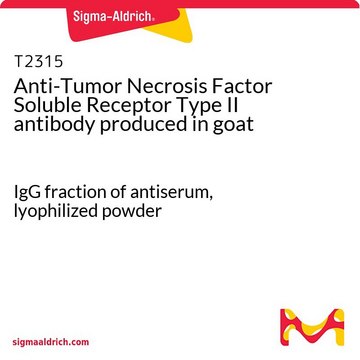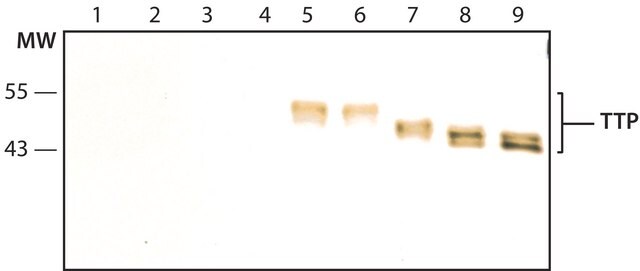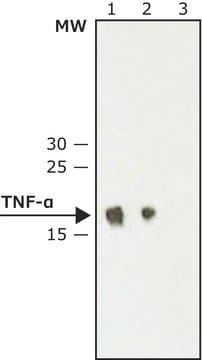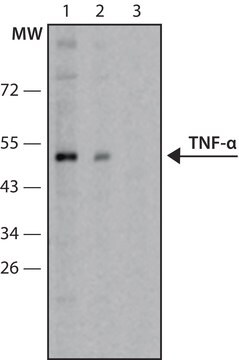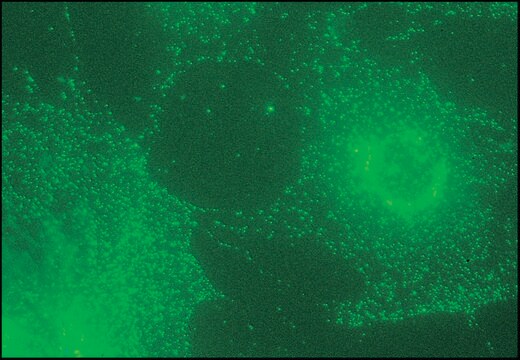T1815
Monoclonal Anti-Tumor Necrosis Factor Receptor II antibody produced in mouse
clone 22221, purified immunoglobulin, lyophilized powder
Synonym(s):
Anti-TNF RII, Anti-TNFRSF1B
About This Item
Recommended Products
biological source
mouse
Quality Level
conjugate
unconjugated
antibody form
purified immunoglobulin
antibody product type
primary antibodies
clone
22221, monoclonal
form
lyophilized powder
species reactivity
human
technique(s)
immunocytochemistry: 8-25 μg/mL using immersion fixed human peripheral blood lymphocytes
microarray: suitable
neutralization: suitable
isotype
IgG2a
UniProt accession no.
storage temp.
−20°C
target post-translational modification
unmodified
Gene Information
human ... TNF(7124)
General description
Specificity
Immunogen
Application
Physical form
Preparation Note
Disclaimer
Not finding the right product?
Try our Product Selector Tool.
Storage Class
12 - Non Combustible Liquids
wgk_germany
WGK 1
flash_point_f
Not applicable
flash_point_c
Not applicable
Certificates of Analysis (COA)
Search for Certificates of Analysis (COA) by entering the products Lot/Batch Number. Lot and Batch Numbers can be found on a product’s label following the words ‘Lot’ or ‘Batch’.
Already Own This Product?
Find documentation for the products that you have recently purchased in the Document Library.
Our team of scientists has experience in all areas of research including Life Science, Material Science, Chemical Synthesis, Chromatography, Analytical and many others.
Contact Technical Service